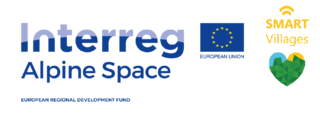demo text
Storytelling
Smart mobility, Smart governance, Smart economy, Smart environment, Smart living, Smart people
Storytelling provides means to obtain information on a project’s outcomes from the viewpoints of participants. This is a good way to engage participants in the process of evaluation as it accommodates diverse voices and perspectives. Information gained with storytelling can highlight strong points and weaknesses of the project. By asking participants to tell a story on a project, they are asked to evaluate an aspect of a project. This generally brings out memorable or momentous experiences.
Stories can be collected through in-person interviews or through blog postings (on a project’s website), sometimes it emerges organically within the project team/stakeholders.
One of the biggest benefits of the storytelling is that is helps to understand the project form the viewpoint of the participants and allows the identification of unintended consequences. Stories can be used effectively alongside statistics and surveys but including stories can help you identify what is working, what is not and why. Besides, stories speak to a broad audience and including your stakeholder’s voices can help you communicate to your stakeholders, funders and to broader community. An important attribute of the storytelling is that it relies on people to make sense of their own experiences and environments; this narrative data can be collected, assessed for emergent themes and integrated into on-going processes to aid the planning, decision making or management.
Organizers of successful event for gathering stories should consider being systematic (record your stories); having designated story-tellers (to help those les experienced ones) and story-collectors (who make sure everything is recorded); be strategic in choosing the stories to tell to broader audience; combine stories with other sources of information; follow the ethical guidelines (asking for permissions, etc.).
One of the most popular approaches to collecting stories is interviewing. They use a simple question-and-answer format, with clearly designated interviewer/facilitator to guide the conversation. You can collect stories by organizing individual sessions or by organizing a group event. The following instructions are collected to help you organize a group event.
Before meeting
Before you organize a group event to collect stories connected to your project/topic, think about the following:
- Choose the venue and decide on who will be the facilitator of the event the main story-collector (e.g. person responsible to record the collected sotries).
- Decide on who will be your designated storyteller to encourage other participants.
- Inform people about the event you are planning to organize and invite them.
Meeting execution
Organizers of successful event for gathering stories should consider being systematic (record your stories); having designated story-tellers (to help those les experienced ones) and story-collectors (who make sure everything is recorded); be strategic in choosing the stories to tell to broader audience; combine stories with other sources of information; follow the ethical guidelines (asking for permissions, etc.). To achieve this, follow the next steps. - Story-collector makes sure he/she is prepared to record the stories. - Participants are seated in a circle. To get the conversation going, the interviewer or facilitator can ask an open-ended question like, “What have you learned from being part of this project/process?” or “How has participation in this project/process changed your life?”. Make sure that story-collector has recorded all the stories. Other questions asked should also address specific activities she/he has participated in and how thoese services are making a difference in his/her life. Some of the suggested topic are also the following: How do I perceive the functioning of the team? What is a major change and how we handled it? Something happened that was wonderful – what was that? What was the best/ worst thing about the project? I learned something that changed how I work… - At the end of the session ask the group to summarize the most important lessons learned based on the stories told in the story circle. You can organize the story circle every few months to assess the progress of your project and to involve diverse participants.
After meeting
After your storytelling event is done, take some time to access the results. You can best do this by carrying out a qualitative analysis of the data. - Analyse the recorded stories and find the emerging themes – how are they correlated? - Make an action plan. - In about 3 – 6 months organize another storytelling event.
 Village, Municipality
Village, Municipality
 Recurring event., 60 - 120 min
Recurring event., 60 - 120 min
 1 - 10
1 - 10
 Moderator skills required, moderator knowledge required.
Moderator skills required, moderator knowledge required.
 Sector: Universal method
Sector: Universal method
